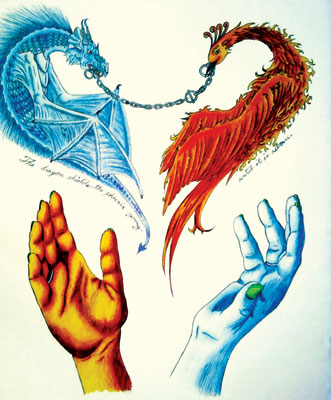All Nonfiction
- Bullying
- Books
- Academic
- Author Interviews
- Celebrity interviews
- College Articles
- College Essays
- Educator of the Year
- Heroes
- Interviews
- Memoir
- Personal Experience
- Sports
- Travel & Culture
All Opinions
- Bullying
- Current Events / Politics
- Discrimination
- Drugs / Alcohol / Smoking
- Entertainment / Celebrities
- Environment
- Love / Relationships
- Movies / Music / TV
- Pop Culture / Trends
- School / College
- Social Issues / Civics
- Spirituality / Religion
- Sports / Hobbies
All Hot Topics
- Bullying
- Community Service
- Environment
- Health
- Letters to the Editor
- Pride & Prejudice
- What Matters
- Back
Summer Guide
- Program Links
- Program Reviews
- Back
College Guide
- College Links
- College Reviews
- College Essays
- College Articles
- Back
Realism
I find Katherine Paterson’s argument interesting and brilliantly put together. Fiction, most definitely, is not defined as true. It is, really, the opposite as she states in her essay. Katherine tells us that fiction is Truth’s “older sister.” To further that point, fiction should go along with truth. In her book, Bridge to Terabithia, she does an excellent job of bringing the two together. The children, and the story, are very real even though Leslie and Jess take adventures to another, make-believe world every day. Everything Jess feels, thinks, and the way he is treated are real life circumstances, are true. Terabithia is a realm that the children pulled from their imaginations, that couldn’t become real, and is, therefore, fiction. Going back to the Bible, the story came first, as Katherine puts it, and it helped mold the truth. I think back to when I know the Bible didn’t have verses and it was just a long story that people read, but in the story was the Truth.
The fact that her novels are real and fiction and she does a great job blending them together makes her novels good reads. Nevertheless, other books that are wholly fiction would not be considered any less than Katherine’s books because they do not blend real with fiction. Pure fiction allows us to read into a human being even though they are not real people. Although, an author can make up a character and have the character think and act like him, still, the characters are imaginary. Imaginary characters, however, are sometimes more real to us than actual, real people. Katherine puts it nicely when talking about a fictional character named Natasha; “She is more real to us than the people we live with every day because we have been allowed to eavesdrop on her soul.” This being true, pure fiction can be a good read, too.
C.S. Lewis’s The Chronicles of Narnia is often analyzed as a different perspective of the Bible. Some view his work as a distortion of the Bible, but we know that the idea of Narnia formed when Lewis conjured up a centaur with an umbrella in his hand. I don’t believe C.S. Lewis’s goal in writing those books was to paint a different picture of the Bible. When an author writes a story, naturally their morals and who they are comes out in the story they are writing. C.S. Lewis isn’t wrong, he is a Christian who was passionate for the Lord and it is evident in his writing.
In response to Katherine Paterson’s Bridge to Terabithia, I think I would strongly disagree with someone who forbade their child to read this book simply because of the realness of it. Death is real, children should know that—do know that, but at a certain level of maturity I would discuss it with my child and their thoughts on the book, having read it myself. Children know death, but the only part that would be difficult for them to understand, for instance, would be Jess’s emotions after Leslie’s death. “Why did Jess throw the paint set Leslie got him for Christmas in the creek?” my child might ask. “Well, because Jess was grieving because he loved Leslie so much and it was easier for him to be angry than sad.” I would reply back.

Similar Articles
JOIN THE DISCUSSION
This article has 0 comments.
